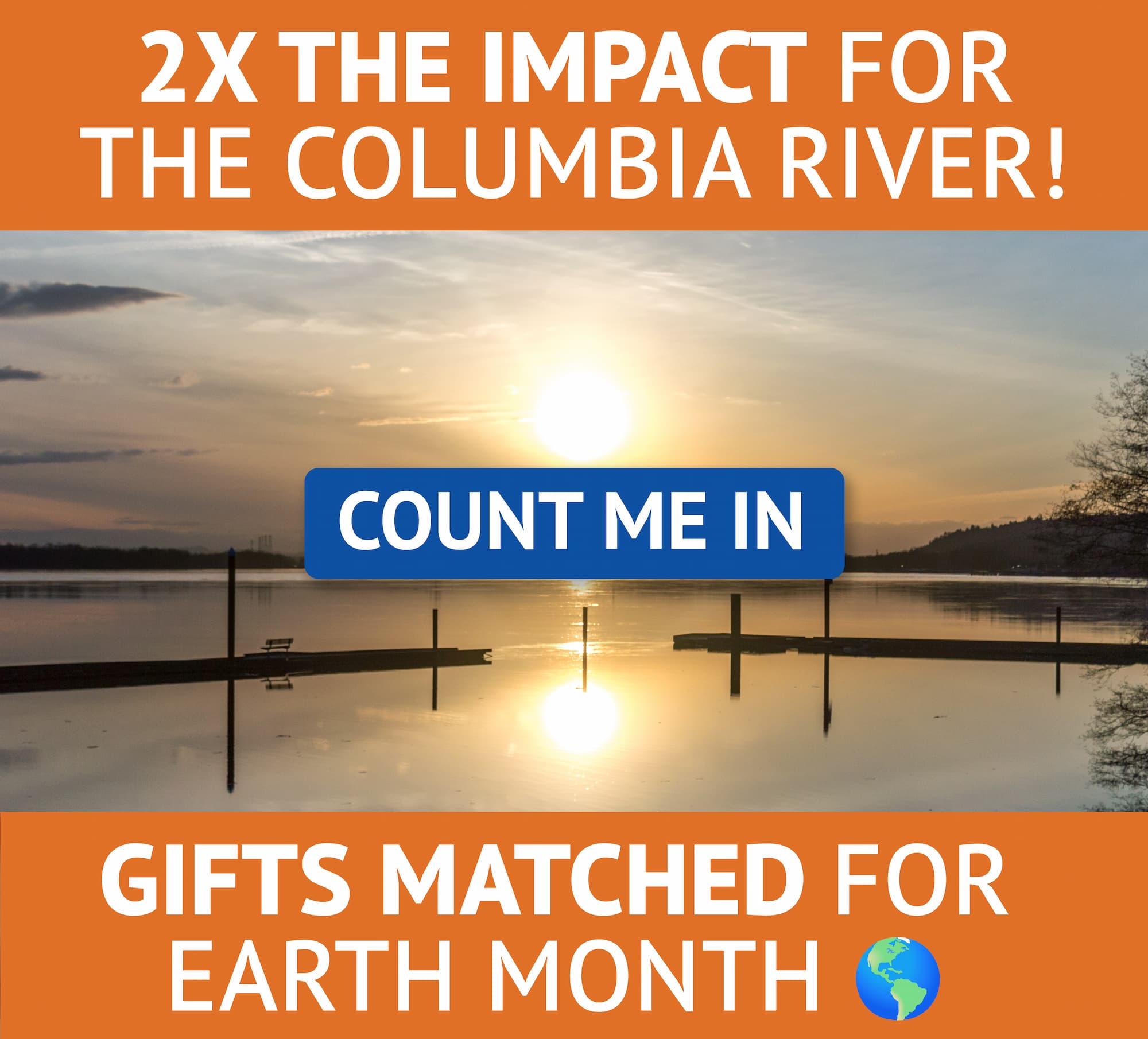The Columbia is a mighty river, by volume, the second-largest in North America. Its lower stretches capture the powerful flow of its thousand-mile length. Unpredictable weather, winds gusting across an expansive surface and heavy commercial shipping traffic create a unique brew of paddling hazards.
Caution!
River current and tides are dynamic forces. Ebb tides increase the speed of the river downstream, while incoming tides can reverse some of the lower river's direction everywhere except in the main channel. Navigation is befuddling as islands disappear under a high tide. At low tide, boats are easily stuck in the soft mud, while high tides can wash away boats. Columbia River winds are notorious, known to swiftly transform a glassy surface into huge whitecapped waves. Afternoon and evening winds generally blow upriver in summer, downriver in winter. Fog obscures landmarks and dangerous river traffic. Winter water temperature is below 50 degrees Fahrenheit. Tankers, cargo ships and barges ply the shipping channel, moving with surprising speed and quiet. Wakes can be dangerous. Perilous obstructions to be avoided include wing dams (row of pilings often submerged), deadheads and strainers (trees, stumps and branches in the water.) Boats can be pinned, or capsized.
Special Columbia River Cautions
The Columbia River Bar
The Columbia River Bar is one of the world's most dangerous bars. Only the most experienced paddlers, paddling in excellent conditions with all appropriate safety training and equipment should paddle the Columbia River Bar.
Dredging Operations
Stay well outside of dredging setups, which include a large pipe on floats that may extend a mile or more. Yellow floating tanks mark the outside perimeter. The dredge barge and small way stations may be visible from a distance.
Sand Overhangs
Avoid sand overhangs, common along the river on islands made of dredge spoils that have eroded. While they look like appealing places to take shelter, their sudden collapse has caused a few deaths in recent years.
Boat and Ship Wakes
Waves from large tankers or small motorboats can be problematic for non-motorized boaters. Wakes range from gentle large roller coasters to large breaking waves, to small breaking waves in close sets. In most cases, your best approach is to approach waves and wakes directly. Keep wakes in mind while on the shoreline as well. As with tides, large waves and wakes can rise above the current water line and pull boats into the river. Secure your boat well or pull it safely, and conservatively up onto dry land.
Commercial Shipping Traffic
Large ships within the shipping channel have right of way over kayaks an canoes. Avoid the shipping channel whenever possible as these ships move quickly and quietly. If you must cross the channel, avoid doing so with a ship in sight or if visibility is poor due to darkness or fog. Finally, don't assume that becuase you are out of the shipping channel you are safe. Columbia River Pilots are some of the best in the world but ships are obviously much bigger and faster than your non-motorized boat. Stay aware and out of their way.
Pile Jetties/Wing Dams
Wood piling and wing dams (typically rows of pilings placed perpendicular to the river) are prevelant throughout the lower Columbia River and present special hazards for boaters. Be aware of these, especially during high water levels as they may be partially or fully submerged.
Fishing
Commercial and recrational fishermen crowd the river at certain locations and at certain times of the year. Be respetful by staying away from fishing boats, fishing lines and fishing nets (usually marked with floats).
Currents
Strong river flows combined with an outgoing tide can make for a fast moving river that can overwhelm even strong paddlers. Be especially careful paddling in these conditions as strong currents when combined with wind can create strong waves and whitecaps across the river.
